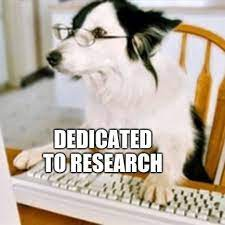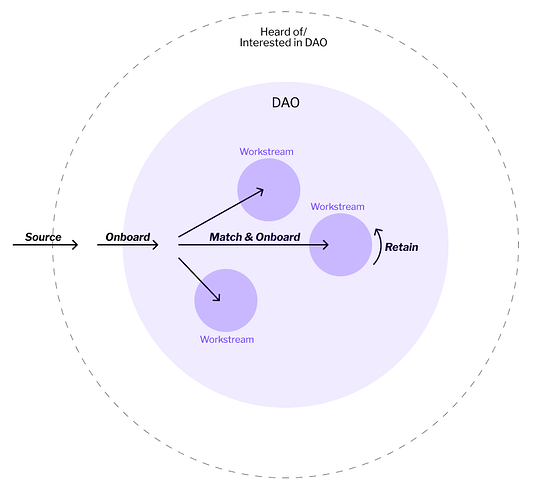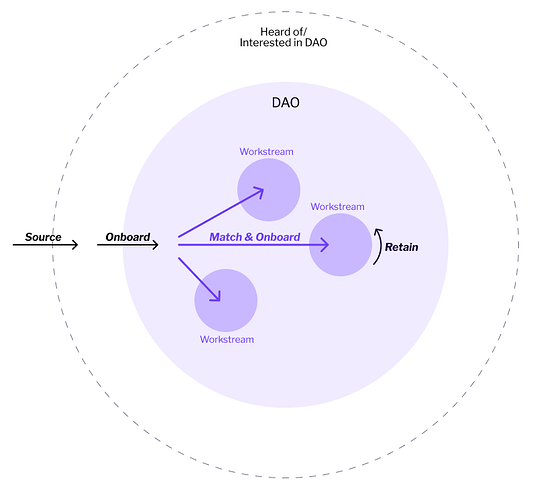Moonshot Collective explores the Blue Ocean of Internet of Jobs
Authors
@GTChase
@willsputra
Purpose of this document:
- Bring awareness to the current thinking about what/how Moonshot Collective plans to explore the Internet of Jobs to the rest of the Gitcoin ecosystem
- Broadcast our intentions to the workstreams in the DAO to align efforts and identify overlapping efforts or unaccounted for needs
- Build the muscle of working in public by collecting feedback from the community on our problem prioritization and next steps related to the Internet of Jobs
Who this doc is for:
- DAO Workstream participants
- Stewards
- Engineering, Design, and Product within GPC
- frens
What is the Internet of Jobs?
By: Kevin Owocki
The Internet of Jobs (IoJ) is what happens when web3 (the internet of money) collides with the timeless exchange of labor for money.
The median internet citizen thinks about their job, not their investments when they think about their financial life & financial sovereignty. NFTs, yield farming, and meme coins may offer a great way to vibe with the crypto community, but it’s not enough for them to integrate crypto into their daily lives.
For 99% of the world, their financial lives are their jobs - not their investments. For this reason, I predict that Web3 won’t go mainstream until the internet of jobs is mainstream.
Will the IoJ be peer-to-peer and less reliant on central intermediaries with unilateral control? Will it unbundle jobs into their composite parts - earning, learning, connecting? What will the fully mature IoJ look like? Read more about the internet of jobs here.
What did we learn?

We embarked on a research project with the goal of answering one simple question: “What pain points do DAOs experience with regards to different domains of talent and jobs?”
In the span of two weeks in February 2022, we interviewed workstream leads from GitcoinDAO and other external DAOs. We wanted to gain a deep understanding of how DAO’s think about the different domains in the life cycle of talent (diagrammed below).
The outcome we were looking for in that deep understanding was what of the above domains (source, onboard, match and retain) present us areas of opportunity due to consistent pain points across different DAO’s. Hint: there were problems & consistency with those problems.
We synthesized the above research and used that synthesis to boil the research down to 3 specific problem statements that showed ripeness for opportunity within the domains of talent.
- Sourcing Talent
- Problem Statement: DAO’s are struggling to find quality talent for long term development needs due to the scattered talent pool filled with skilled web3.0 knowledge workers to meet their demands/needs.
- Onboarding Talent:
- Problem Statement: DAO’s do not have ways to effectively onboard potential talents without manual intervention, which makes it difficult for potential talents to know how to get started and where to get the right resources
- Matching Talent:
- Problem Statement: DAO’s do not have ways to match talent with work at scale. There’s no easy and unified way to display the work available. It’s also difficult to identify and vet talent (DAO leaders would love to move away from traditional resumes, but we still don’t know what the better alternatives are!)
Eventually we will want to address each problem statement, but as we all know context shifting can be less than ideal.
Getting Started
To ensure we have a specific focus, we wanted to prioritize one of the domains and its problem statements to proceed with experimentation.
After synthesizing our research we decided to prioritize the Matching domain, which is highlighted above. Here’s why:
Web3 companies are hiring more than ever, related job postings grew almost 400% over the last year, according to LinkedIn. That translated to more developers joining Web3 in 2021 than any previous year by over 4,000 developers. One last number to paint a picture, ~ triple the amount of part time contributors then there are full time contributors in the Web3 ecosystem.
We are seeing a huge shift of talent coming into Web3 + more of that talent being part time then full time. So the question becomes how do we onboard the continued influx of new talent & part time contributors to full time and meaningful work. This problem surfaced itself through our research and we see it day to day within GitcoinDAO. We have an influx of talent, but struggle to keep up with that influx and continue to struggle on how we efficiently and effectively onboard them to meaningful + valuable work.
We believe this would involve identifying who those new talents and part-time contributors are (what skills they have, what “proof of work” they have, etc.), and matching them with the right work at scale. If we could unlock the potential of every contributor of a DAO, DAOs can create more impact.
What’s Next
Now that we have our focus point, let us tell you what we are going to do to address this problem. To paint a simple picture, we have broken down our process into a strategy, goals and outcomes.
Strategy:
- Validate that the prioritized problem is a problem for a wider set of DAO’s
- Generate a wide set of ideas/potential solutions that could potentially solve the problem statement
- Prioritize ideas to be built as rapid prototypes
- Build prototypes based on generated list of ideas
- Experiment with prototypes to determine problem - solution fit
Goal:
- Experiment with 1 or more prototypes that potentially solves the onboarding problem
- Invalidating the product concept would still be considered success
The Outcome:
Make a decision about whether the prototype(s) addressing the onboarding problem should:
- Spin out for GTM & on-going development
- Determine no further opportunity exists and end R&D in this area
- Iterate on a different concept for the problem space
The Ask
Interested in the IoJ space? We’d love to get your feedback on the prioritized problem statement above and the next steps: do they resonate with you? What else would you like to see, and what could be improved?
One more ask from us: if you have friends or colleagues who are leading a DAO, we’d love to speak with them! We’d like to further research on the pain points of leading a DAO and validate problems/solutions.
If you have any feedback, questions or concerns feel free drop them as comments on this gov post, or reach us on Discord:
willsputra | Gitcoin#7177
ChaseADragan#8602
Future Updates
Interested in keeping up-to-date with the progress of the IoJ workstream? We’ll be posting minor updates within this gov post, and any major movement or updates will be reflected in new gov posts on gov.gitcoin.co.


